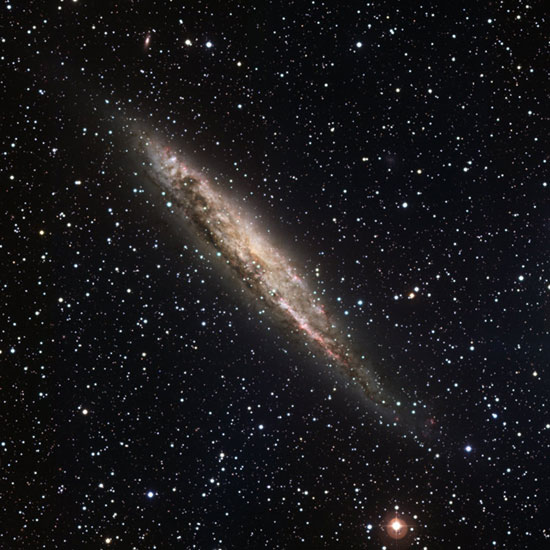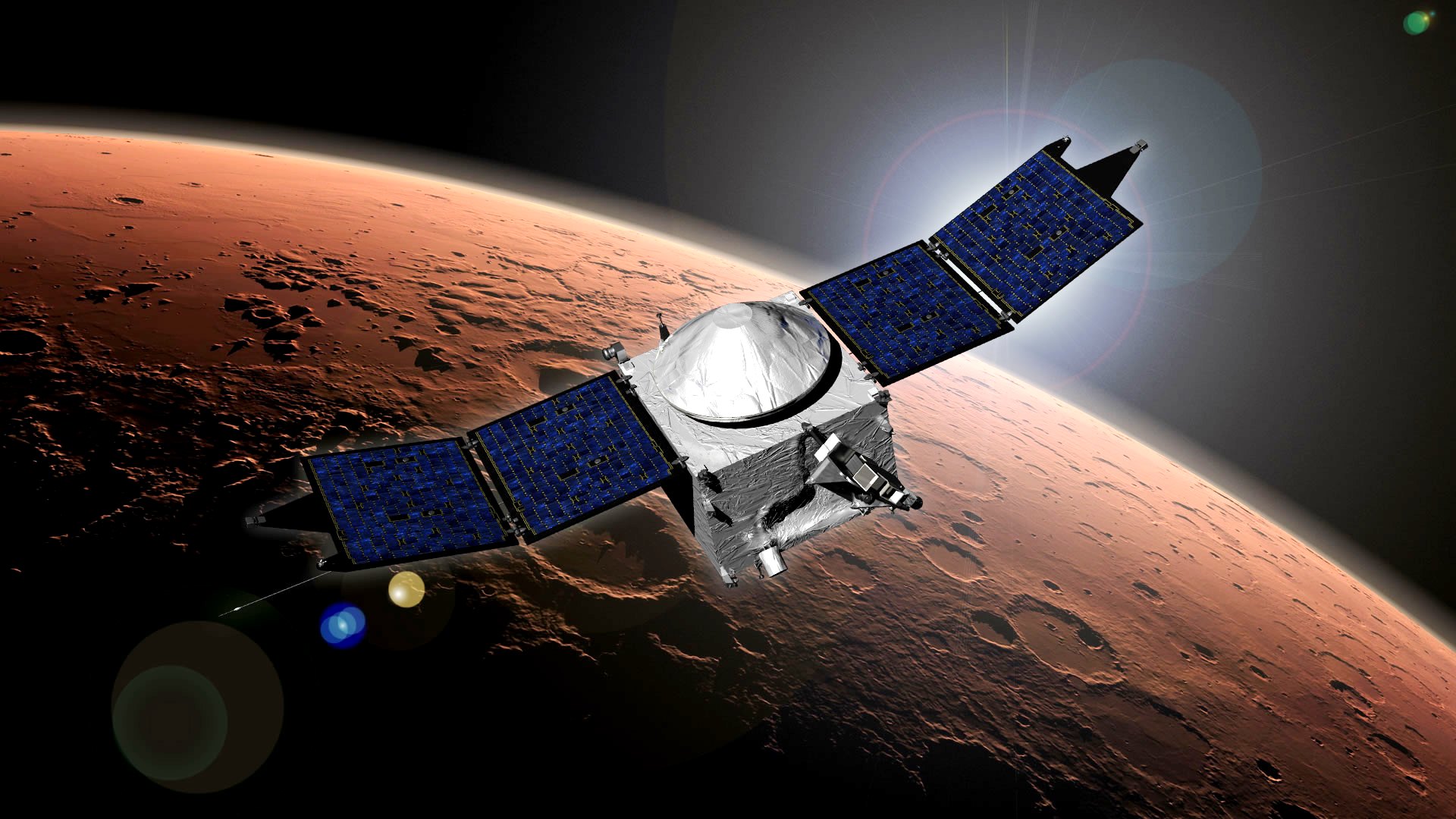Nearby Galaxy Is Almost Milky Way Look-alike

A relatively nearby galaxy that closely resembles our ownMilky Way can be seen edge-on in a new image.
Observations of the galaxy, NGC 4945, suggest that this hiveof stars is a spiralgalaxy much like our own, with swirling, luminous arms and a bar-shapedcentral region.
But that's where the similarity seems to end: NGC 4945 has abrighter center than theMilky Way; the look-alike's center likely harbors a supermassiveblack hole that is devouring reams of matter and blasting energy out intospace.
The new portrait of NGC 4945, which lies some 13 millionlight-years away in the constellation of Centaurus, was taken by the Wide FieldImager (WFI) instrument at the 2.2-metre MPG/ESO telescope at the La SillaObservatory in Chile.
NGC 4945 appears cigar-shaped from our perspective on Earth,but the galaxy is actually a disc many times wider than it is thick, with bandsof stars and glowing gas spiraling around its center. Other spiral galaxies,like ours, are similarly flattened and typically contain a central bulge ofstars around a black hole.
Special filters on the telescope isolate the color of lightemitted by heated gases such as hydrogen, showing sharp contrasts in NGC 4945that indicate areas of star formation.
Other observations have revealed that NGC 4945 has an activegalactic nucleus, meaning its central bulge emits far more energy than calmergalaxies like the Milky Way.
Breaking space news, the latest updates on rocket launches, skywatching events and more!
Black holes gravitationally draw gas and dust into them,accelerating and heating this attracted matter until it emits high-energyradiation, including X-rays and ultraviolet light. Most large, spiral galaxies,including the Milky Way, host a black hole in their centers, though many ofthese dark monsters no longer actively ?feed? at this stage in galacticdevelopment.
- Video ? Black Holes: Warpers of Space and Time
- Video ? Spiral Galaxy Evolution
- Images: Amazing Galaxies

Space.com is the premier source of space exploration, innovation and astronomy news, chronicling (and celebrating) humanity's ongoing expansion across the final frontier. Originally founded in 1999, Space.com is, and always has been, the passion of writers and editors who are space fans and also trained journalists. Our current news team consists of Editor-in-Chief Tariq Malik; Editor Hanneke Weitering, Senior Space Writer Mike Wall; Senior Writer Meghan Bartels; Senior Writer Chelsea Gohd, Senior Writer Tereza Pultarova and Staff Writer Alexander Cox, focusing on e-commerce. Senior Producer Steve Spaleta oversees our space videos, with Diana Whitcroft as our Social Media Editor.
